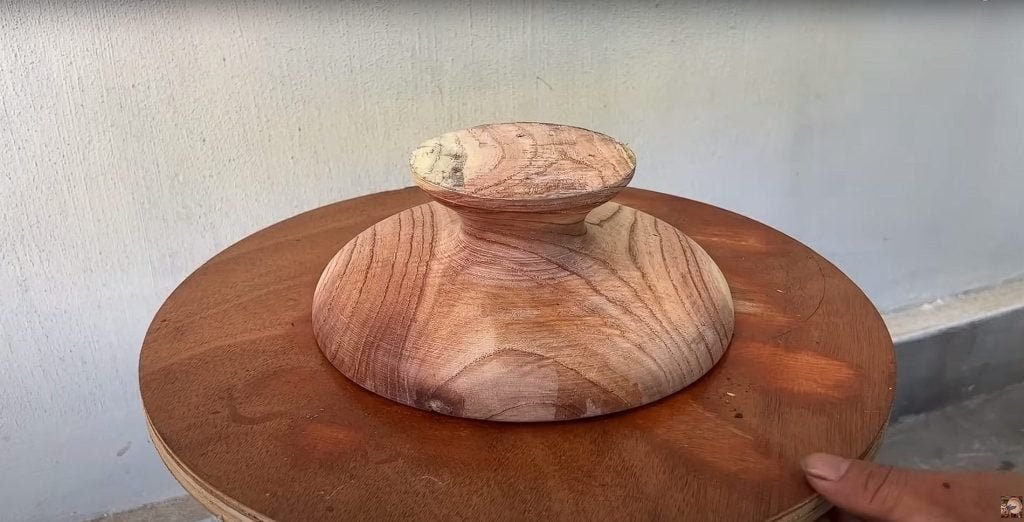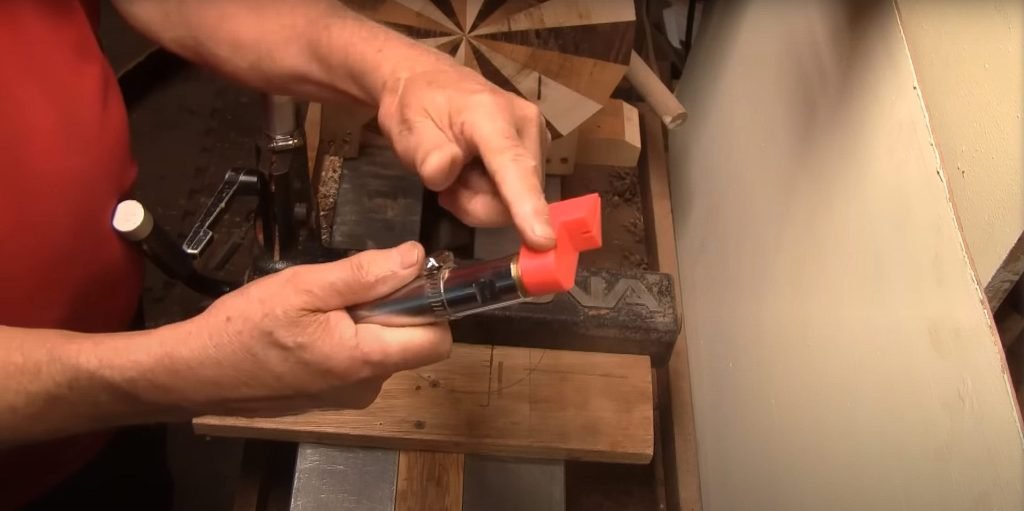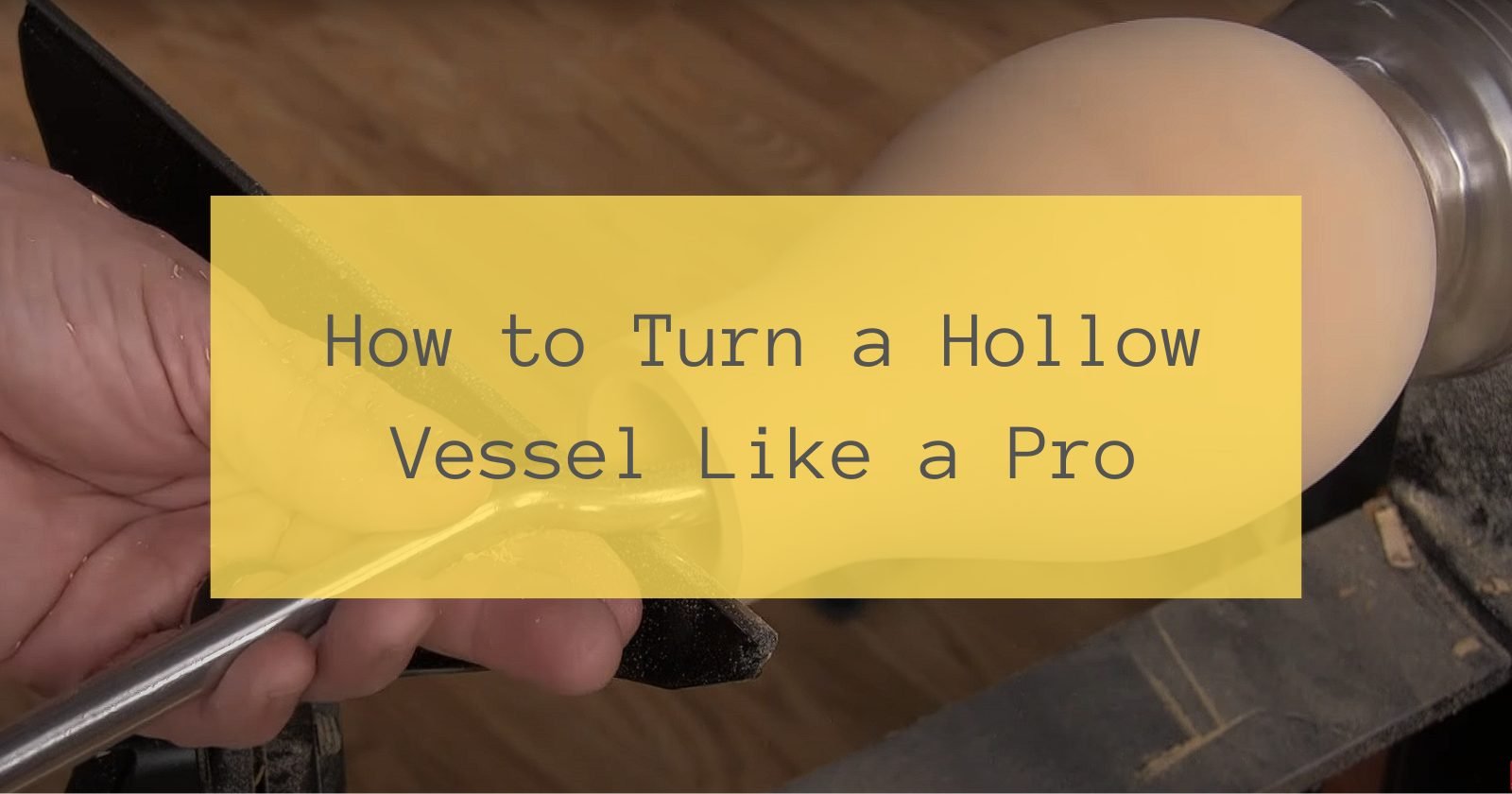Table of Contents
Start with a balanced blank, secure it on the lathe, and use sharp tools for consistent hollowing. Pay attention to wall thickness, smooth the interior, and sand while on the lathe. Part off carefully for a pro finish.
Step-by-Step Guide to Hollow Vessel Turning
Shaping the Exterior
To turn a hollow vessel like a pro, start by shaping the exterior of your piece. Begin by mounting your blank on the lathe and roughing out the basic shape using a bowl or spindle gouge. Focus on creating an even thickness throughout to ensure structural integrity. Once you have achieved the general form, refine it with shear scraping techniques to smoothen any tool marks and create a flawless surface for your vessel.
When I first started learning how to turn hollow vessels, I found that maintaining consistent wall thickness was crucial for achieving professional results. Pay attention to details as you refine the exterior shape, as this lays the foundation for an impressive finished product.
Hollowing Out the Interior
The next step in turning a hollow vessel is hollowing out its interior. Utilize specialized tools such as bowl gouges, scrapers, or hollowing tools designed for reaching deep into enclosed spaces. Work methodically from top to bottom while monitoring wall thickness constantly. As you progress through this stage, maintain steady hands and check depth and uniformity across all vessel sections.
In my experience, when hollowing out the interior of a vessel, taking regular breaks to evaluate my progress helped me avoid over-cutting or creating uneven surfaces inside.

Expert Tips for Precision and Safety
Proper Tool Selection
When turning a hollow vessel, selecting the right tools for the job is crucial. Choosing gouges with swept-back wings and deep flutes can help you achieve smooth, precise cuts. Using a sturdy bowl gouge or scraper with a negative rake angle will minimize tear-out and ensure cleaner finishes on your vessel.
It’s essential to always have sharp tools when working on hollow vessels. Dull tools can lead to rough surfaces and splintering, compromising the overall quality of your work. Regularly sharpening your tools using a sharpening stone or grinder will maintain their effectiveness and enhance precision in your turning process.
Vessel Design Considerations
Before starting the turning process, carefully consider the design of your hollow vessel. Ensure the wood grain aligns with the vessel’s shape to prevent structural weaknesses or potential cracking. Moreover, paying attention to wall thickness is critical for balancing aesthetics and functionality in your final piece.
Taking detailed measurements throughout each turning stage helps me maintain consistency in wall thickness and shape symmetry across my vessels. This approach ensures precision and allows room for adjustments as needed during the crafting process.
Safety Measures
When working on hollow vessels, prioritize safety by wearing appropriate protective gear such as face shields, dust masks, and lathe guards. Always secure your workpiece firmly onto the lathe using reliable chucks or spigots to prevent unexpected movement during turning.
In addition to personal protective equipment, maintaining good posture while standing at an appropriate distance from rotating components significantly reduces the risk of accidents. Being mindful of these safety measures fosters confidence in executing intricate techniques while safeguarding against potential hazards.

Advanced Techniques for Hollow Vessel Turning
Complex Design Elements
Enhance your hollow vessel turning by incorporating complex design elements. Experiment with intricate shapes, such as asymmetrical profiles or multi-axis designs. Utilize different wood species to create stunning contrasts and visual interest in your vessels. By adding unique textures and patterns, you can elevate the overall aesthetic appeal of your creations.
Try new techniques like carving, piercing, or inlay work to achieve one-of-a-kind designs. For example, consider creating a hollow vessel with a delicate pierced pattern that allows light to filter through, resulting in an eye-catching display piece. These advanced design elements will set your open vessel creations apart and showcase your craftsmanship.
Studying various design principles and experimenting with different forms has significantly expanded my capabilities as a turner.
Decorative Enhancements
Elevate the beauty of your hollow vessels through decorative enhancements. Explore embellishments like ornamental rims, finials, or textured surfaces using specialized turning tools and accessories. Incorporating metal accents or resin infills can add a modern touch to traditional wooden vessels.
Consider integrating natural features into your designs by incorporating bark inclusions or burl clusters for an organic aesthetic. By embracing these decorative enhancements, you’ll transform ordinary hollow vessels into captivating works of art that captivate viewers’ attention.
In my experience, exploring various decorative techniques has allowed me to infuse more personality into my creations while expanding my artistic repertoire.
Preparing for Hollow Vessel Turning
Selecting the Right Wood
Choosing the correct wood is crucial. Look for dense woods with a fine grain, such as maple, cherry, or walnut. These types of wood are easier to work with and less likely to splinter during turning.
Consider the size of your project when selecting wood; larger vessels may require more stable and sturdy wood.
It’s important to note that different woods have unique characteristics and can affect how they turn on the lathe. For example, some woods may produce smoother finishes, while certain species might be prone to tear-out or chipping.
Essential Tools and Equipment
Before embarking on your hollow vessel turning endeavor, ensure you have all the necessary tools and safety equipment. The primary tools required include:
- A lathe (preferably with an outboard turning attachment).
- Gouges.
- Parting tools.
- Measuring calipers.
- A face shield to protect against flying debris.
- Sandpaper for finishing touches.
In addition to these tools, having a steady rest or step center can provide support when working with longer pieces of wood. Furthermore, keep a dust extractor nearby as it helps maintain a clean workspace by removing wood particles generated during turning.
Vessel Attachment Techniques
Chucks
Chucks are a popular method for attaching vessels to the lathe. They provide a secure grip on the boat, allowing easy turning and shaping. One advantage of chucks is their versatility; they can accommodate various vessel shapes and sizes. However, one downside is that chucks can leave marks on the vessel’s surface if not used carefully.
Chucks:
- Provide a secure grip
- Versatile for different shapes and sizes
- May leave marks on the vessel’s surface
Faceplates
Another common attachment technique is using faceplates. These are metal plates with screws that hold the vessel in place while it’s being turned. The benefit of faceplates is their stability, ensuring that the ship remains firmly attached during turning. On the other hand, faceplates require screwing directly into the base of the boat, which can cause damage or splitting.
Faceplates:
- Offer stability during turning
- Risk damaging or splitting the base when screwing in
When attaching your vessel to ensure stability during turning, consider weight distribution and balance to prevent wobbling or vibrations while working on your project.
Essential Tools for Hollow Form Turning
Tool Functions
Gouges are used to shape the interior of the vessel, while scrapers help achieve smooth finishes. Parting tools are vital for separating the ship from the lathe, and hollowing tools are designed to create the boat’s interior space.
Understanding how each tool functions is paramount in achieving professional results. For instance, knowing how to properly use a scraper to create clean surfaces inside the vessel can significantly improve its overall quality. Understanding which type of gouge is best suited for different cuts and shapes within the ship can elevate your turning experience.
Experimenting with various high-quality tools allows me to understand their unique contributions better. This firsthand knowledge helps me select the right tool for specific tasks during my turning process.
Recommendations on High-Quality Tools
Some highly recommended brands include Robert Sorby, Easy Wood Tools, Crown Tools, and Hamlet Craft Tools.
Quality sometimes means something other than expensive; there are affordable options from reputable brands that deliver exceptional performance.
Hollow Vessel Turning Best Practices
Sanding Techniques
Achieving a flawless finish on a hollow vessel requires meticulous sanding techniques. Start with lower-grit sandpaper to remove tool marks and imperfections, then gradually progress to higher grits for a smooth surface. Use light pressure and consistent strokes to avoid uneven spots or dips in the wood. Consider using abrasive paste or micro-mesh pads for an extra level of refinement.
Taking my time during sanding is crucial. I must be patient and thorough at each stage, ensuring the surface becomes increasingly smooth as I progress through the grits.
Sealants and Finishes
Applying appropriate sealants and finishes is vital for achieving professional results. Utilize sealants like dewaxed shellac or sanding sealer to prepare the wood for finishing coats. Options such as friction polish, Danish oil, or lacquer can provide different sheen levels and protection. Experiment with various combinations to discover which enhances your vessel’s natural beauty best.
In my experience, experimenting with different sealants and finishes has allowed me to understand how each one interacts with the wood I’m working on. This hands-on approach has been invaluable in perfecting my finishing process.
Mastering the Art of Hollow Vessel Turning
Embracing Different Styles
Embracing different styles allows you to explore various aesthetics and techniques. You can infuse your personal touch into each piece by experimenting with diverse shapes, sizes, and designs. For example, incorporating unique textures or adding embellishments like beads or burn lines can elevate the visual appeal of your hollow vessels.
Learning to manipulate the wood to achieve specific curves or angles enables you to create pieces that reflect your style. For a striking effect, you can also play with contrasting elements, such as smooth surfaces juxtaposed with intricate details. Exploring traditional and contemporary design influences empowers you to develop a signature style that separates your work.
Showcasing Creativity through Technique
Mastering the art of hollow vessel turning involves not only technical proficiency but also creativity in technique. Incorporating unconventional methods like multi-axis turning or off-center turning can add an innovative flair to your creations. These techniques allow for asymmetrical forms and unexpected silhouettes, providing ample opportunities for artistic expression.
Conclusion and Further Resources
Precision and safety are paramount in mastering the art of hollow vessel turning. The step-by-step guide, expert tips, and best practices provide a comprehensive roadmap for honing your skills. As you advance, embrace the nuances of this craft, allowing yourself to innovate while upholding the foundational techniques.
I recommend delving into additional resources such as workshops, forums, and advanced tutorials for further exploration. Connecting with experienced turners can offer invaluable insights and mentorship opportunities. Keep practicing, stay curious, and never underestimate the power of continuous learning in perfecting your hollow vessel-turning expertise.
Frequently Asked Questions
How can I prepare for hollow vessel turning?
To prepare for hollow vessel turning, ensure a sturdy lathe with a tool rest and tailstock. Select high-quality wood, gather the necessary tools such as gouges and scrapers, and familiarize yourself with safety procedures.
What are some essential tools for hollow form turning?
Essential tools for hollow form turning include bowl gouges, spindle gouges, parting tools, calipers, and scrapers. A reliable chuck or faceplate is crucial for securely mounting the workpiece on the lathe.
What are some expert tips for precision and safety in hollow vessel turning?
To ensure precision and safety in hollow vessel turning:
- Maintain sharp cutting edges on your tools to reduce tear-out.
- Always wear appropriate personal protective equipment (PPE) like eye protection and dust masks.
- Take your time to avoid rushing through critical steps.
Are there advanced techniques that can be used for hollow vessel turning?
Advanced techniques in hollow vessel turning include incorporating decorative elements such as texturing or carving on the vessel’s surface. You can also explore segmented construction methods or experiment with asymmetrical forms to enhance your designs.
How can one master the art of hollow vessel turning?
Mastering the art of hollow vessel turning requires consistent practice to refine skills in tool control and wood manipulation. Study from experienced turners through workshops or online resources. Experiment with various wood species to understand their unique characteristics when turned.
